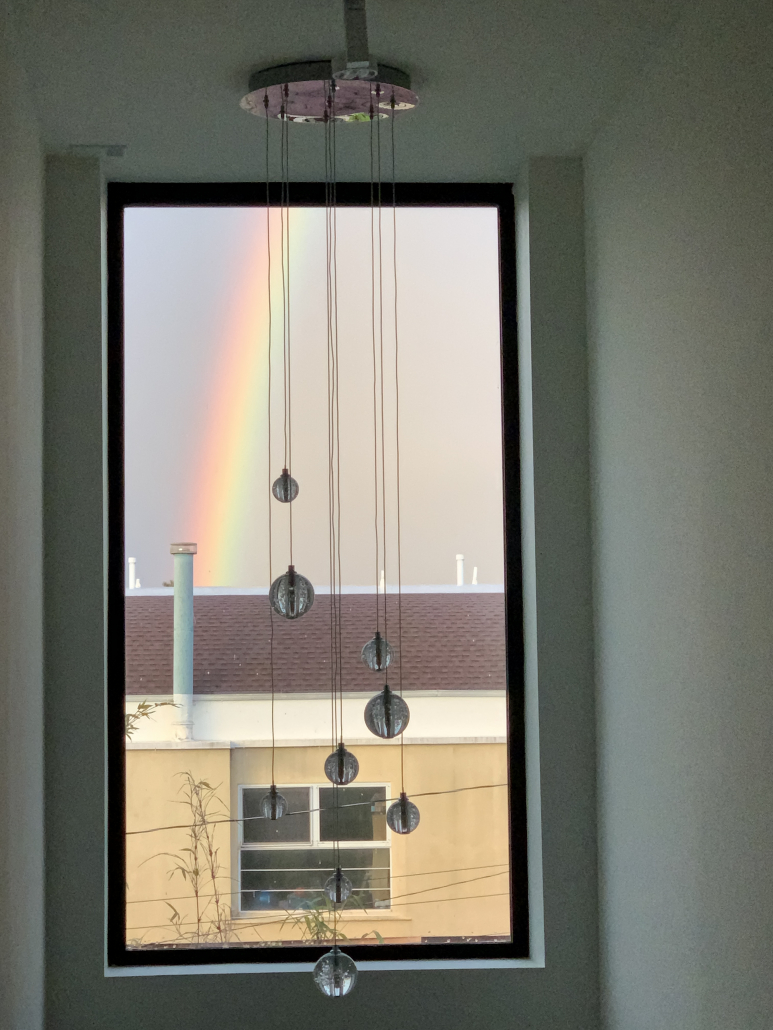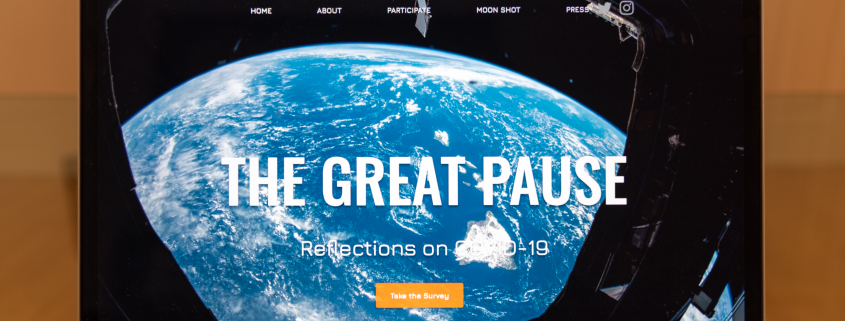In isolation, Roski alumna documents history

In the early days of lockdown, Richelle Gribble sat in her bedroom staring out of the window as so many others were doing around the world. In that moment, she related her experience to an astronaut gazing through the window of the International Space Station down at Earth.
Gribble, a Los Angeles-based artist and USC Roski graduate, realized how the world remained interconnected despite the physical separation brought on by the pandemic. She realized she was not alone in this feeling after connecting with her friend Isabel Beavers, another L.A.-based artist and educator, and discovering they shared the same perspective. They talked about how peculiar it was that the coronavirus pandemic united the global population in isolation.
The conversation about global connectivity inspired The Great Pause Project, an online open-source collection of photos and written materials that document individual responses to the coronavirus pandemic. The two artists, in collaboration with Elena Soterakis, a Brooklyn-based artist and co-founder of BioBAT Art Space, recognized the need for them as artists to act quickly and develop a project that allowed people from around the world to submit their experiences and process the situation.
“[We wanted to just have] a repository of all these different experiences and [amplify] an individual voice — and not just the voice that you see on mainstream media and TV,” Soterakis said, “but the really beautiful and interesting stories that were coming up for individuals — and [capture] that.”
The project website officially launched in early May with three main initiatives aimed at collecting individual stories and perspectives. The first initiative, “The Window Effect,” called on community members to submit images of the view from their windows and share experiences with self-isolation and social distancing. Submissions have been sent in from Dubai, Malaysia and numerous other countries around the world.
The Great Pause Project has also partnered with the Arch Mission Foundation, a nonprofit organization that is gathering the largest archive of human knowledge for long-term preservation, to archive their own library of submissions into a small time capsule. The time capsule will be sent on a lunar module by 2022, to not only allow the current contributors to reflect on their past but also to allow future generations the chance to look at a personal account of history.
“Using [the time capsule] as an opportunity to uplift and inspire future generations is really why we thought it was important to send this message into space,” Gribble said.
The second initiative, “The Echo/Location Survey,” has been updated throughout recent months to reflect the constantly changing global stage. As the pandemic continued, the police killing of George Floyd in Minneapolis led more people around the world to join in Black Lives Matter protests that generated widespread media attention.
“The survey was an opportunity for folks to really record through written reflection the various elements of how they might be feeling, seeing the world and also thinking forward toward the future,” Beavers said.
One positive aspect to “The Echo/Location Survey” is its anonymity, which allows respondents to submit their personal experiences in a comfortable space. Soterakis said that a young woman in one submission explained how she was confronted with her parents’ abusive relationship when she came home from boarding school.
“The participant really wants to share their story with others who might be experiencing the same thing,” Beavers said.
The survey seemed to be a cathartic and enjoyable exercise for respondents, who wrote more for each submission than the project creators expected, Soterakis said. The experience proved to be very intimate and personal.
Gribble and her co-collaborators had planned on making the project adaptable from the beginning. Being an open-source idea, the project had to be structured in a way that allowed individual contributors to influence and shift the focus of the project, especially since the creators could not anticipate exactly how the world would change in the near future.
The final and most recent initiative was the “COVID-19 Photo Diary,” which asked people to document their neighborhoods and environments throughout the pandemic. Submissions have included photos of discarded medical waste, such as gloves and masks, creative social distancing signs that use birds to measure out six feet and images of Black Lives Matter protests.
“We could have never predicted that from this health crisis, it would evolve into a social ethics crisis which would evolve into a political campaign,” Gribble said.
In order to generate a wide breadth of submissions and involvement, Gribble and her team sent word of their project through an official Instagram page, personal social media accounts and newsletters sent to both their artistic and scientific communities. While the initial contacts were centralized in the L.A., New York and Boston areas, the team acknowledged the importance of capturing diverse perspectives in the project.

Word of mouth contributed to the project’s global spread, which was especially evident in their work examining how university and boarding school students’ lives changed after returning home from the United States. One student in Dubai shared the project with their peers, which led to a surge in global submissions.
One goal of this crowd-sourced project, Gribble said, is to allow individuals to shape the continuing narrative, which is why the project remains open for submissions. By expanding the project’s reach and timeframe, Gribble and her team hope to continue to garner international contributions and generate a diverse set of voices.
According to Gribble, the pandemic proved to be a rare time to simultaneously reflect on the current moment and consider the future of our society and our role in shaping that future.
“The light at the end of the tunnel of [this project] is that we want to encourage people to envision a better future and also use this pandemic as inputs and a warning for future generations so they can maybe bypass some of the things that we’ve done,” Gribble said.
Artists hold a complex role in society as they showcase individual perspectives and communicate global concepts. For Beavers, this role developed a new responsibility to visualize the connected nature of society during a period of isolation.
Artists can also establish safe spaces for the general public to communicate their narratives and highlight perspectives that may counter dominant narratives in media. The project has encouraged Beavers to focus on a bigger picture during the pandemic: documenting individual narratives during a period of isolation and major social movements.
Students who are increasingly required to engage in virtual instruction are especially part of this continuing narrative, and their stories of coping with this reality are something Gribble and her team want to incorporate in their project.
“Recent [high school] graduates that are entering their freshman year, we would love to hear about their experience because they are the first ever generation to have to undergo something like this,” Soterakis said. “There is so much that you benefit from being on the college campus and the network and socializing.”
Submissions for The Great Pause Project can be sent to: https://www.greatpauseproject.com/.

